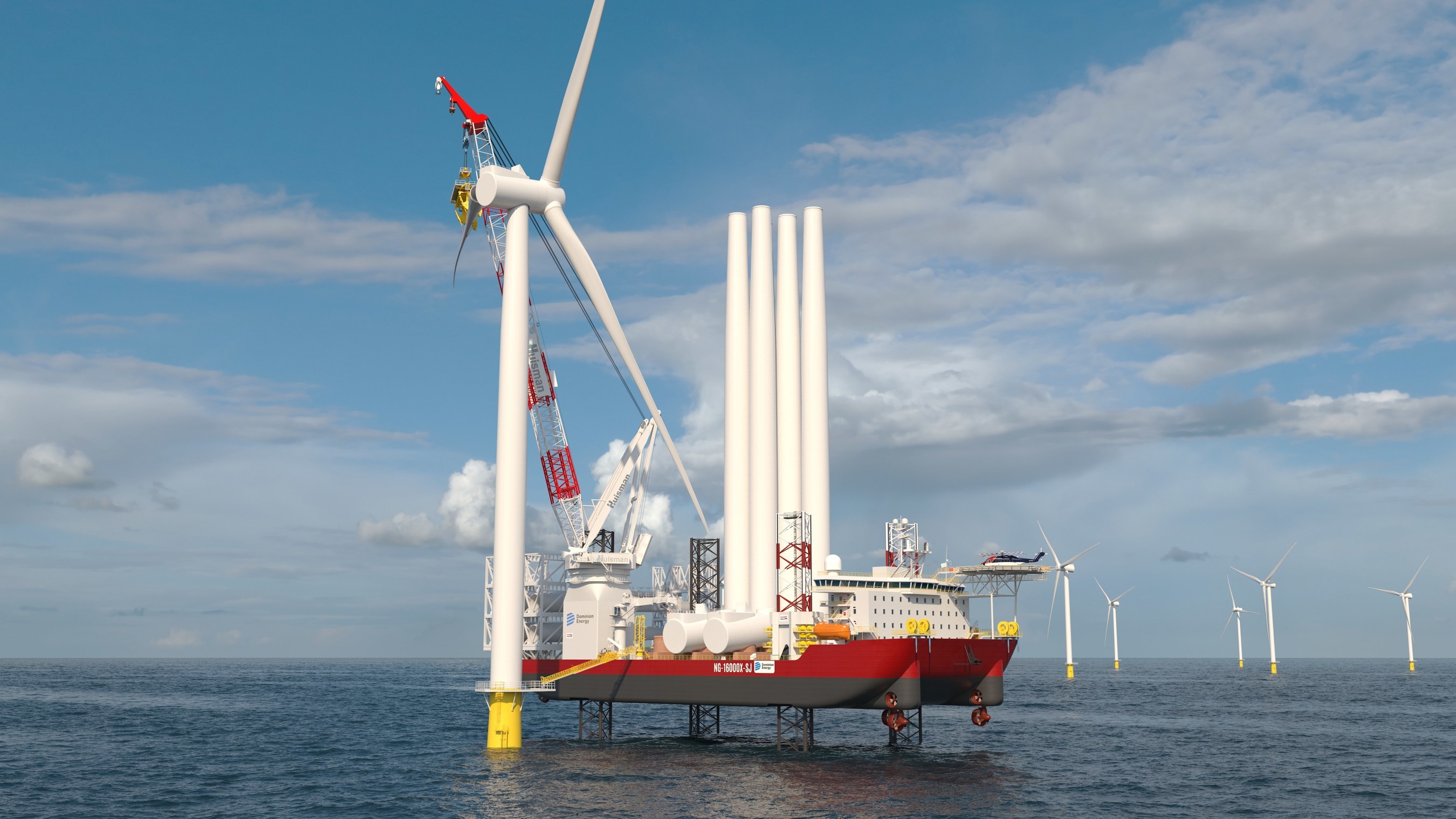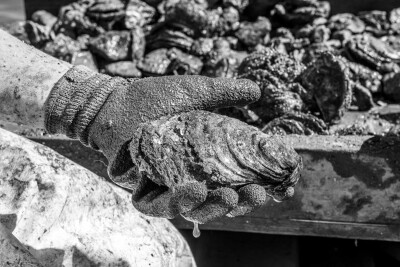Construction of the first U.S.-flag, Jones Act-compliant offshore wind turbine installation vessel marked a milestone Dec. 16 with laying the keel for the Dominion Energy vessel.
The 472-foot WTIV will be one of the largest in that class, with a Huisman main crane boom length of 426 feet and lifting capacity of 2,200 tons – enough the handle the next generation of 12- to 14-megawatt turbines standing over 800 feet tall.
The vessel is under construction by global marine shipbuilding firm Keppel AmFELS at its Brownsville, Texas shipyard, and will carry up to 119 persons when it goes into service by the end of 2023, according to Dominion Energy.
The overall project cost excluding financing costs, is estimated to be around $500 million. Dominion says financing is arranged through a lease financing agreement with leading global banks and “construction and financing costs will not impact Dominion Energy Virginia's customers' bills.”
Dominion is already operating its twin-turbine, 12MW Coastal Virginia Offshore Wind (CVOW) pilot project, located 27 miles off the coast of Virginia Beach. That project went live in September and is operational while awaiting the Bureau of Ocean Energy Management's final technical review.
Ocean surveys and geotechnical work are underway for Dominion’s 2,640-megawatt full scale CVOW commercial project, which will be located in a lease area adjacent to the pilot project. These surveys will support the development of the project's Construction and Operations Plan that Dominion will submit to BOEM this month.
“This is a monumental step for the offshore wind industry in America," said Robert M. Blue, Dominion Energy's president and chief executive officer, in a statement announcing the keel laying.
"Dominion Energy is proud to be leading a consortium of respected industry participants in the construction of the first Jones Act compliant offshore wind turbine installation vessel, which will provide significant American jobs, and provide a reliable, home-grown installation solution with the capacity to handle the next generation of large-scale, highly-efficient turbine technologies. This will better enable the offshore wind industry to bring clean, renewable energy to customers in the U.S."
Dominion Energy said it expects the vessel “to be fully utilized in support of the installation of over 5 gigawatts of planned offshore wind generation off the East Coast of the U.S. through 2027 and beyond.”
The vessel construction is expected to create nearly 700 direct construction jobs and use more than 14,000 tons of U.S. domestic steel, with nearly 10,000 tons sourced from Alabama and West Virginia suppliers. After commissioning the vessel will be based out of Hampton Roads, Virginia with a U.S. crew.
It’s big step for the overall prospects of the nascent U.S. offshore wind industry – Vineyard Wind’s recent regulatory problems with the Trump administration notwithstanding.
A recent report from the Government Accountability Office echoed concerns among wind developers that the limited global WTIV fleet could be a significant bottleneck to constructing more than a dozen wind turbine arrays off the East Coast.
Because of rules set by the Jones Act of 1920, requiring cargo to be transported between U.S. ports by U.S. vessels and mariners, developers can only use foreign-flag WTIVs in a kind of choreographed arrangement with U.S. vessels carrying materials out to work sites.
With increasing offshore wind development in Europe and Asia, the availability of those vessels will get tighter and could constrain the U.S. market, the GAO reported. From the perspective of commercial fishing advocates, that could give thier industry some breathing room to get a bigger voice in BOEM's process for siting and approving wind projects.
Dominion Energy’s vessel would be the first out of a U.S. yard after three years of construction. If the federal government issues final approvals for a major offshore wind project such as Vineyard Wind, the GAO reported that could trigger major investment decisions by developers and others to start other U.S. WTIV projects.
Dominion Energy contracted with Keppel AmFELS, a wholly owned U.S. subsidiary of Keppel Offshore & Marine Ltd, for the engineering, procurement and construction of the offshore wind turbine installation vessel.
Seajacks, a leader in the operation of self-propelled jack-up vessels that provide safe and efficient offshore wind turbine installations, will assist Dominion Energy with construction and operations oversight. Dominion Energy expects the vessel to operate continuously for several years through contracts with offshore wind projects in the U.S.







